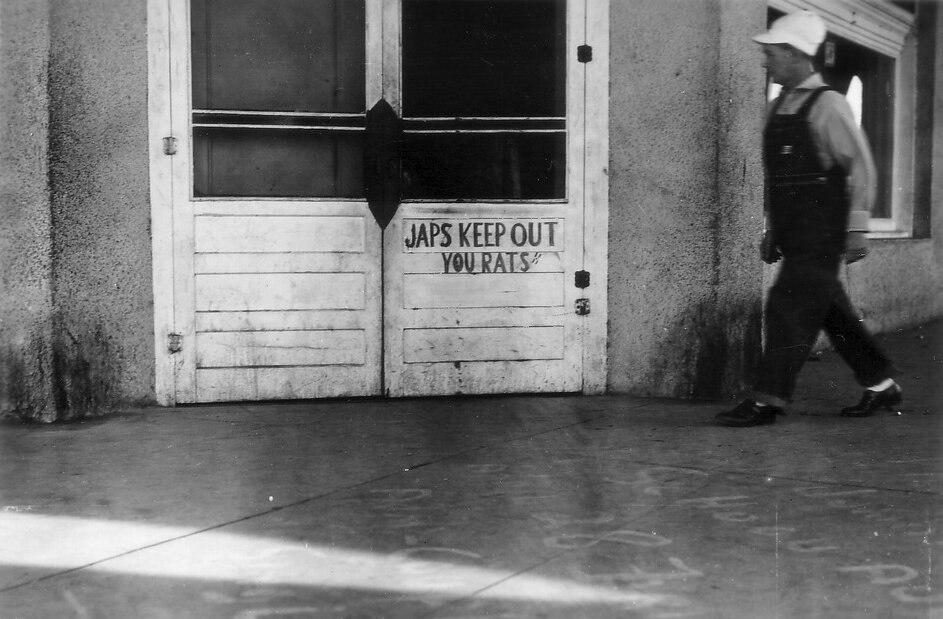DISCRIMINATION
One of the first instances of severe discrimination occurred in Hawaii just four years after the first "official" Japanese immigration. In 1889, Katsu Goto (a prominent merchant and interpreter) was killed by those who didn't like the advocacy work he performed on behalf of Japanese plantation workers.
The period from 1898 to 1907 saw great numbers of Japanese immigrants come to America. By 1910, the Japanese were the largest minority group in the state of Washington. Although the 1907 Gentleman's Agreement had limited Japanese immigration to America, anti-Asian feelings ran high. Anti-Japanese prejudice was common in the early 1900s on the west coast, especially in California. Some whites feared that the immigrants would take away their jobs, while others, notably farmers, were resentful of the bountiful crops raised by the Japanese farmers.
The Asiatic Exclusion League was founded in San Francisco in 1905, marking the official beginning of the anti-Japanese movement. In 1906, Japanese schoolchildren were segregated from white students by the San Francisco school board. In response to the growing anti-Japanese prejudice, President Theodore Roosevelt negotiated the "Gentlemen's Agreement" with Japan in 1907. The government of Japan agreed to stop issuing passports to laborers, thus slowing Japanese immigration to the United States.
On February 18, 1907, Congress approved amending existing immigration legislation which allowed President Roosevelt to issue an executive order stopping the migration of Japanese laborers from Hawaii and Mexico on March 14, 1907. In concert with the Gentlemen's Agreement, this action ended labor immigration to the U.S. and put labor contractors out of business. In 1924, President Calvin Coolidge signed the 1924 immigration bill into law, effectively ending Japanese immigration to the U.S.
California Governor Hiram Johnson signed the 1913 Alien Land Law, which was followed in November 1920 by a new Alien Land Law, intended to close loopholes in the 1913 law. The Alien Land Laws prevented non-citizens from owning property in California.
On November 13, 1922, the U.S. Supreme Court ruled to definitively prohibit Japanese from becoming naturalized citizens on the basis of race. This ban lasted until 1952.
Meanwhile, overt discrimination continued to be practiced against those of Japanese ancestry. On November 12, 1941 (shortly before the attack on Pearl Harbor), 15 Japanese American businessmen and community leaders in Los Angeles' Little Tokyo were picked up in an F.B.I. raid. Records and membership lists for such organizations as the Japanese Chamber of Commerce and the Central Japanese Association were seized. The 15 cooperated with authorities, while a spokesman for the Central Japanese Association stated: "We teach the fundamental principles of America and the high ideals of American democracy. We want to live here in peace and harmony. Our people are 100 percent loyal to America."
This outrage was but a prelude. Having faced more than a half-century of discrimination, Japanese Americans were but a few months from entering some very dark years involving deprivation of life, liberty, and property.

